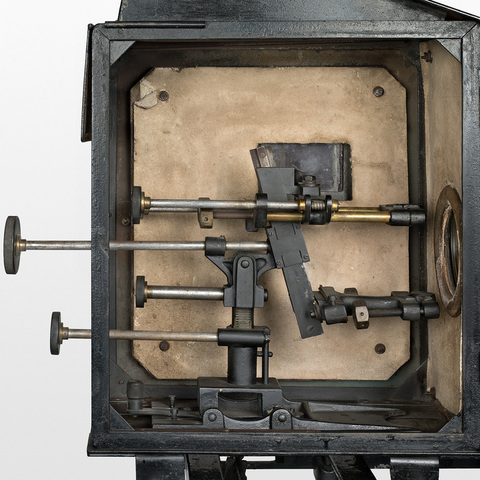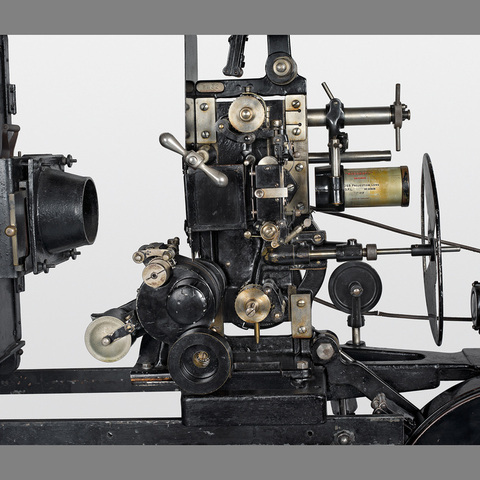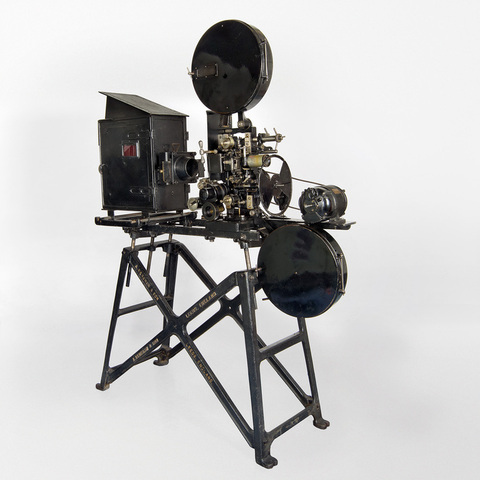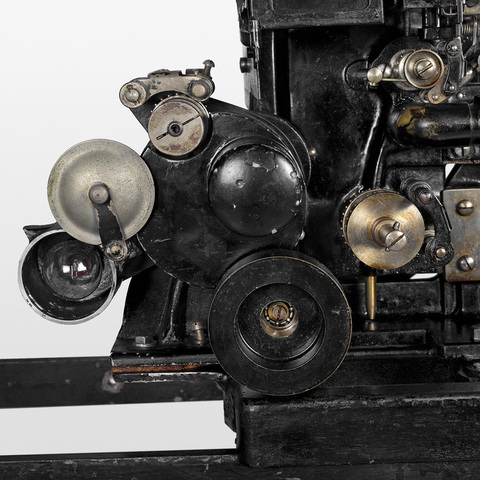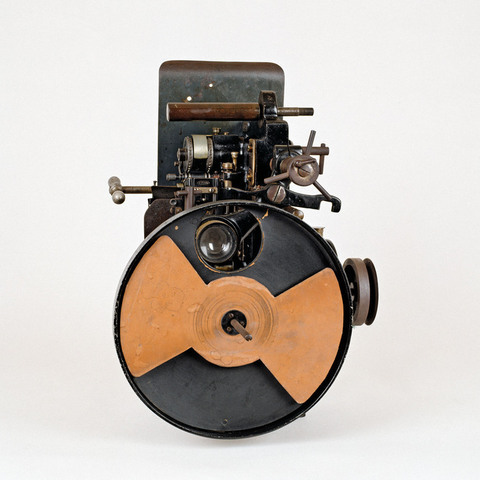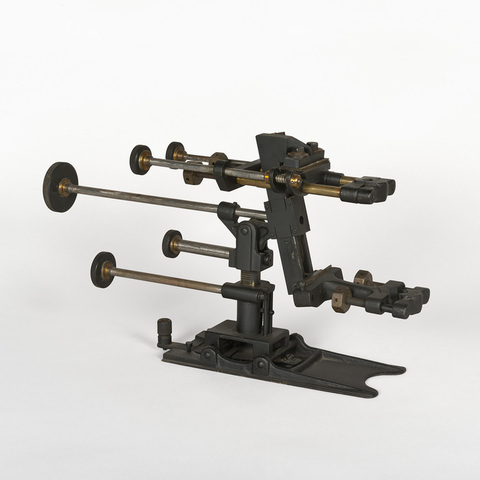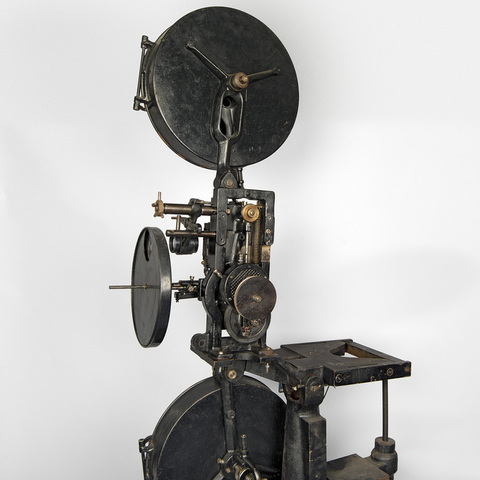Projecteur de film 35 mm sonore
Fiche détaillée
Type de l'appareil
entraînement du film 35 mm par croix de Malte à bain d'huile ; trois débiteurs dentés ; obturateur deux pales ; réglage image en haut et bas ; bras débiteur et bras récepteur avec carters ; lecteur son avec ampoule excitatrice ; moteur électrique E.M.I. 110/220 v. 50 per. ; lanterne en métal peint avec toit ouvrant, deux portes avec verres bleus, plaques d'amiante à l'intérieur ; lampe à arc AP-02-2412 ; condensateur à deux lentilles et à poignée ; passe-vue métallique ; table fonte réglable
Auteurs
Informations non disponibles
Fabricants
A. Kershaw & Son
Leeds, 76, Woodhouse Lane
Utilisateurs
Informations non disponibles
Distributeurs
Kalee LTD
Londres
A. Kershaw & Son
Leeds, 76, Woodhouse Lane
Sujet du modèle
Informations non disponibles
Objectif
Rosskote (bloomed) Ross Projection lens D.P.L. n° 206 113, F. 4 inch, Made in England
Taille de l'objet
Ouvert :
Informations non disponibles
Fermé :
Longueur : 152 cm
Largeur : 50 cm
Hauteur : 185 cm
Diamètre :
Informations non disponibles
Taille de la boîte de transport
Informations non disponibles
Remarques
Marque sur l'appareil : "Kalee Indomitable Model n° 7 Sole makers A. Kershaw & Son Leeds (England)". Marque sur la table : "A. Kershaw & Son Leeds England".
"The Kalee Indomitable, a modern high-grade professional projector. Notice the strong girder-pattern supporting stand, made of cast iron, the weight of which is an advantage in ensuring perfect rigidity. The feet of the stand will be seen to be slotted, as the intention is for it to be set upon a concrete floor on which it is bolted upon grouted-in-bolts. The head of the stand is not in one with the legs, but separate, being held upon pillars at either corner. These pillars can be slid up and down to alter the height of the mechanism above the operating room floor, and also to tip it so that the picture is thrown slightly upward or downward, at will. On the right of the stand is the lamp house, which can be slid either nearer to or farther from the mechanism. [...] Notice the upper and lower fireproof metal spool boxes and, before the lens in its rack mount, the three bladed rotary cover shutter, with its broader blade for intercepting light during picture change, and two narrower (dummy) blades for increasing the number of light pulsations to the second till each individual pulsation (or flicker) is no longer consciously recorded by the observer's eye. Over the bottom, or take-up, spool box is an extension of the top of the projector stand, and here is clamped the electric driving motor. It is a fractional horse-power motor of anything between one-eighth and one-twenty-fourth horse-power, and drives the mechanism through a round leather belt passing between its pulley and the grooved rim of the fly-wheel keyed to the outer end of the finger wheel shaft of the projector's Maltese cross intermittent movement. Masking on the Kalee Indomitable machine is done by racking up or down the whole film-driving unit, including top and bottom sprockets, intermittent movement and the actuating gear wheel train, in relation to the position of lens and gate aperture. Hence the forward position of driving motor and comparatively long belt drive. The Kalee Indomitable projector is an English machine, manufactured by Kershaw, Ltd., Leeds. It has earned a reputation for very silent running and steady projection, even at abnormally high speeds. It is built with great accuracy, with interchangeable parts, so that they can be quickly renewed when wear appears. This machine has what is called "front threading". That is to say the gate opens from the front, and not the back, when threading up the film" (Colin Bennett, A Guide to Kinematography, London, Isaac Pitman & sons, 1923, p. 68-72).
Bibliographie
Colin Bennett, A Guide to Kinematography, London, Isaac Pitman & sons, 1923, p. 68-72.
